For an overview of how CodeRabbit integrates with Git platforms, see Add
CodeRabbit to your repository.
Getting Started
To integrate your self-managed GitLab with CodeRabbit, we require specific information for the initial setup within your domain. Once this setup is complete, you can log in directly using the OAuth2 flow.1
Visit CodeRabbit login page
Navigate to the CodeRabbit login page and select Self-Hosted GitLab.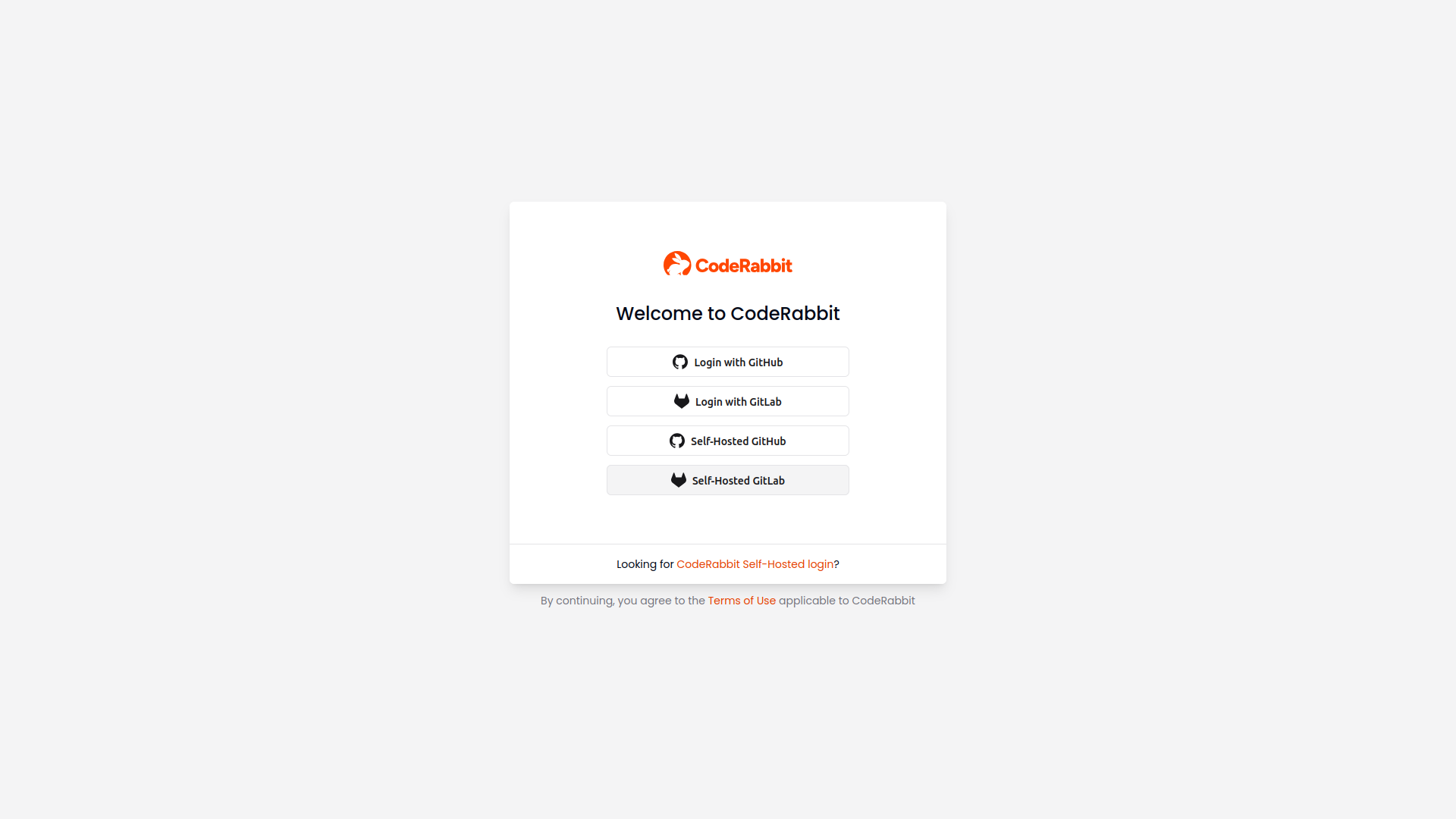

2
Enter your GitLab instance URL
Enter the URL of your self-managed GitLab instance and click Submit. We’ll check our database for an existing record of your organization and start the login process if found.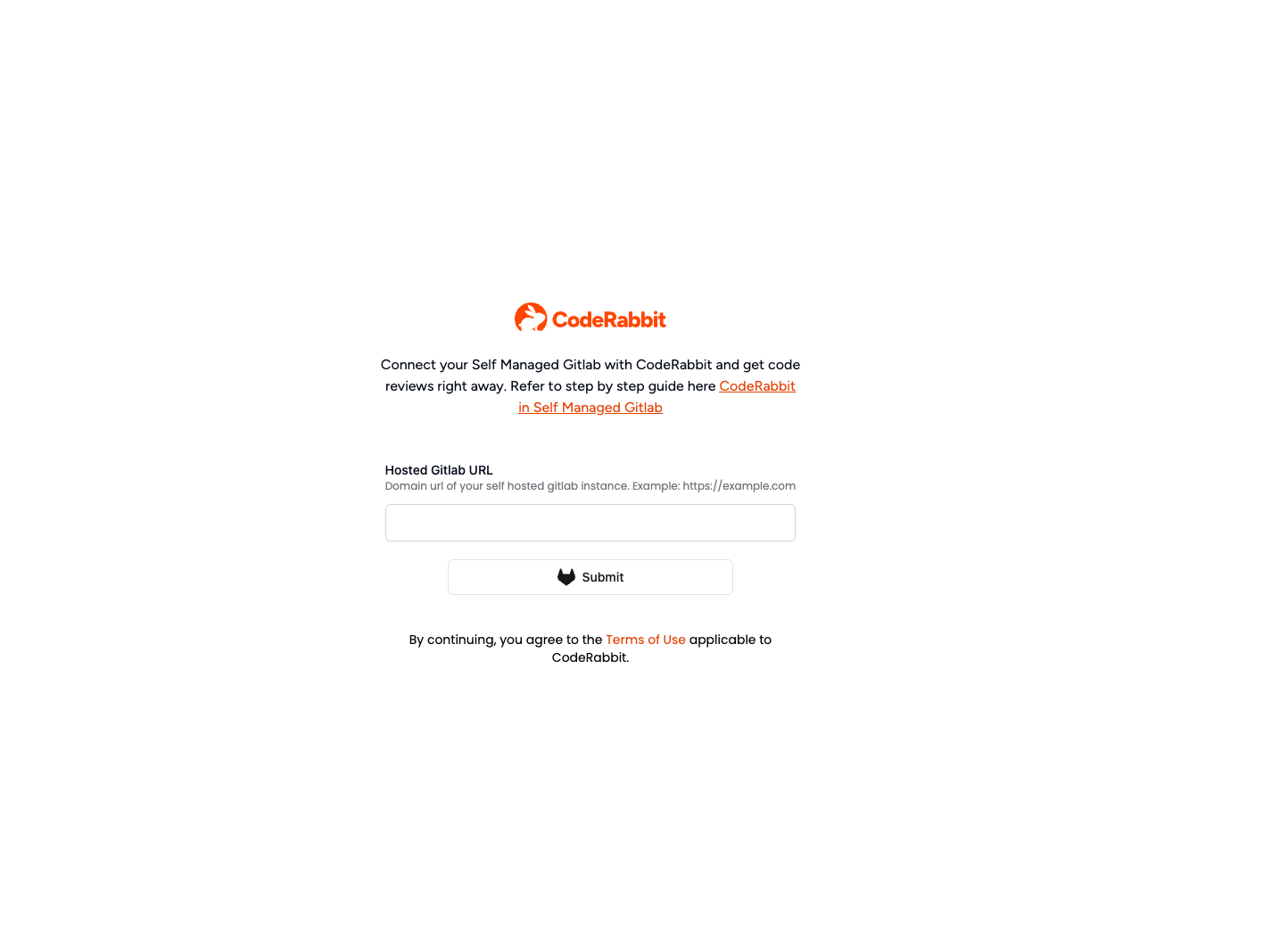

3
Choose onboarding method
You can choose between automated or manual onboarding based on your security
preferences and administrative access.
Onboarding Options
Automated Onboarding (Recommended)
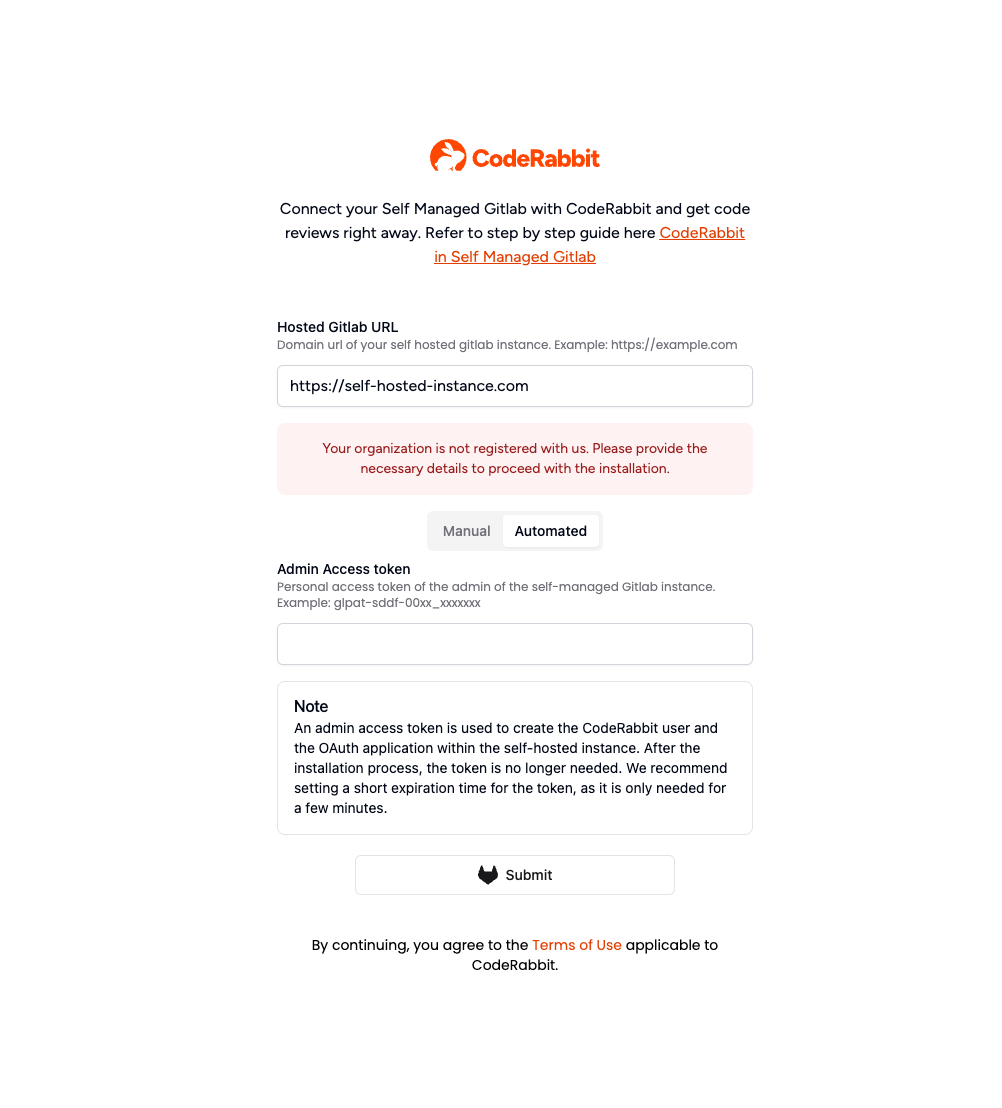
Why do we need the Admin Access Token?The admin access token is required to set up a new CodeRabbit bot user within your self-managed instance. The token is needed only once during the initial setup process. Once generated, you can set its minimum expiration period. This is the standard approach used by other products in this category.Note: This does not automatically install the CodeRabbit app across all projects. You will add CodeRabbit manually to the projects you wish to integrate.
Manual Onboarding
For the manual onboarding process, you need to create the CodeRabbit user and the OAuth2 GitLab application.
Creating CodeRabbit User
This feature will work with any user from your organization, but we strongly recommend creating a dedicated user called CodeRabbitAI. This ensures clarity about which user is used for our application and allows for better fine-grained access control.1
Create the user
Log in with an instance admin account and follow the steps provided in the
GitLab
documentation
to create a new user.
2
Retrieve user information
After the user is created, retrieve the User ID from that user’s profile.
3
Generate access token
Generate an access token for this
user. The access token is used to post reviews on merge requests.
If you prefer, you can create a Group Access Token which will create a
dedicated user on your behalf. For more information, see Group Access
Token.
Creating OAuth2 Application
For self-managed GitLab, we recommend creating an instance-wide application unless you want the reviews to be limited to a single group or user. Follow the steps outlined in the GitLab documentation for creating the application.OAuth2 Application Requirements:
- Scopes:
api read_user email openid - Callback URL:
https://app.coderabbit.ai/login
Generating Personal Access Token
GitLab offers an option to generate a personal access token for adding a new user and setting up the application in the self-managed instance.1
Login to your instance
Login to your self-hosted instance. For automated
onboarding, ensure you have admin rights.
2
Access user settings
On the left sidebar, select your avatar, then select Edit profile.
3
Navigate to Access Tokens
On the left sidebar, select Access Tokens.
4
Create new token
Select Add new token.
5
Configure token settings
- Enter a name and expiry date for the token
- We need this for the initial setup, so the minimum expiry time is sufficient
- If you do not enter an expiry date, it defaults to 365 days from the current date
- Select the required scopes:
api,read_api,read_user
6
Generate and save token
Select Create personal access token and note down the token as it will
only be displayed once.
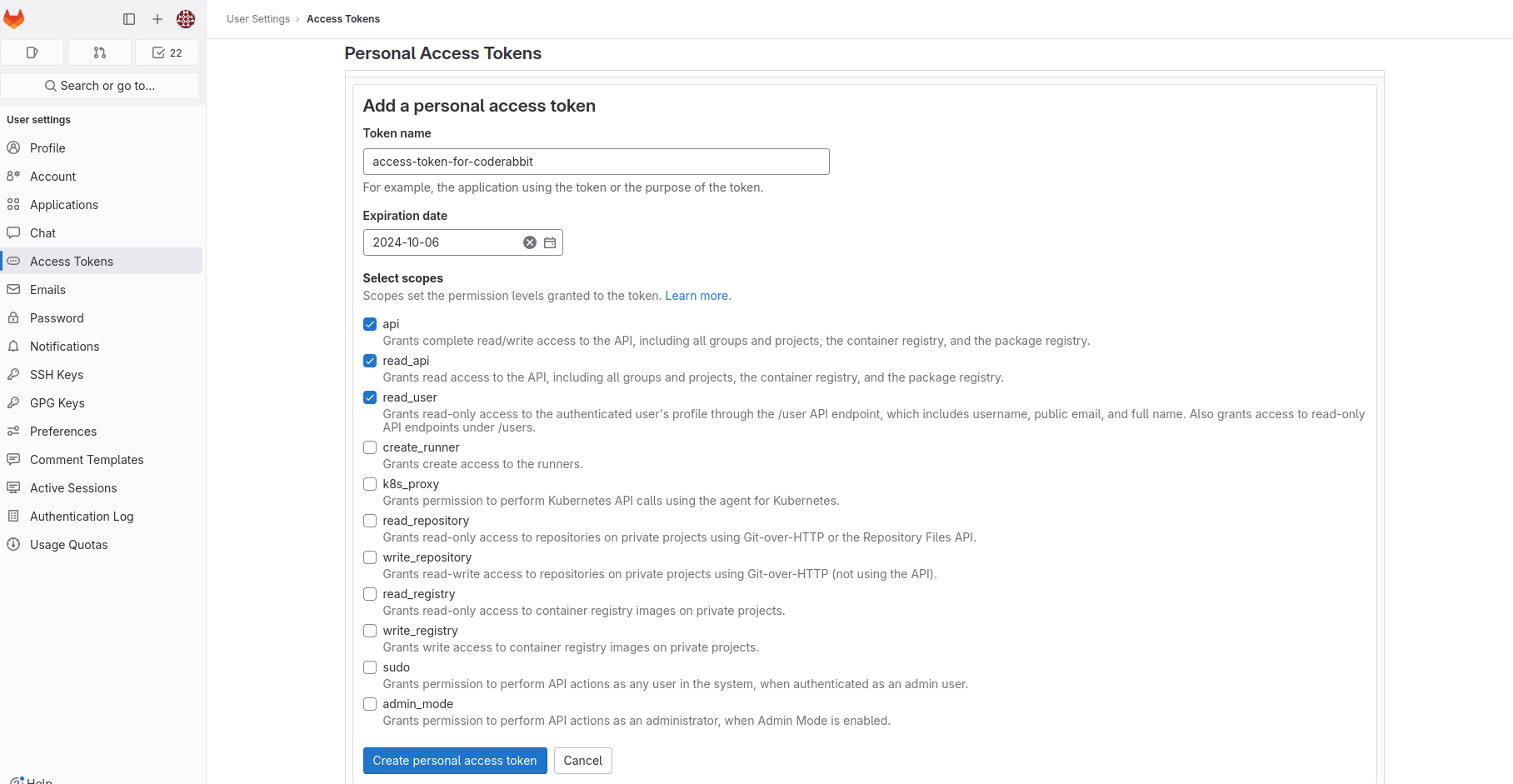
Paste the details and click submit
- Submit the form.
- We will handle the setup process for you.
- On subsequent visits, your setup will be automatically detected, allowing for direct login.
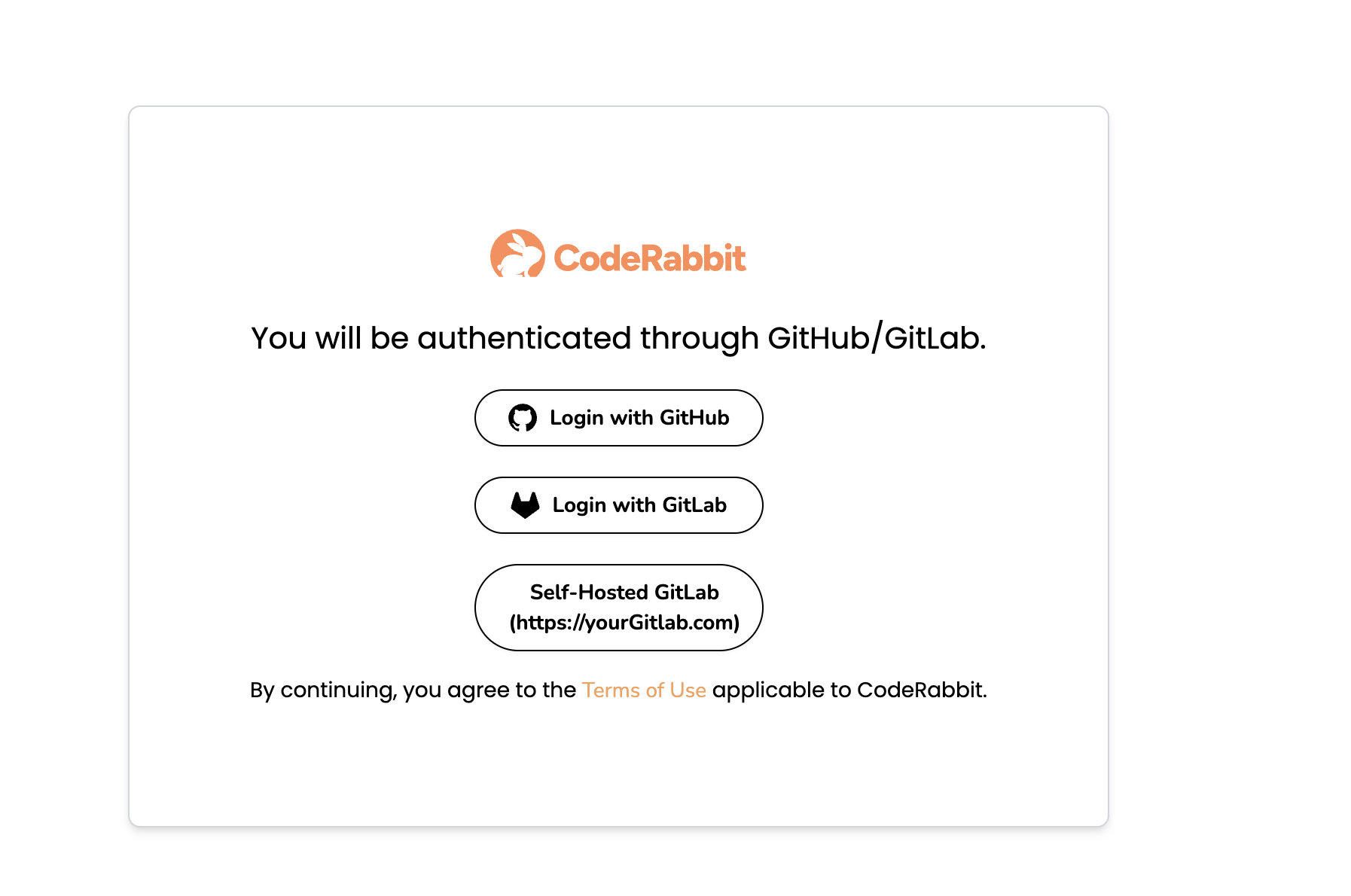
Whitelist CodeRabbit IP address
Use this CodeRabbit IP if your instance requires IP whitelisting.VPN tunneling
For enhanced security or complex network setups, CodeRabbit offers VPN tunneling to enable secure, direct connectivity between CodeRabbit and your self-hosted GitLab instance through an encrypted tunnel.Enterprise Feature: VPN tunneling is available to customers on the
Enterprise tier only.